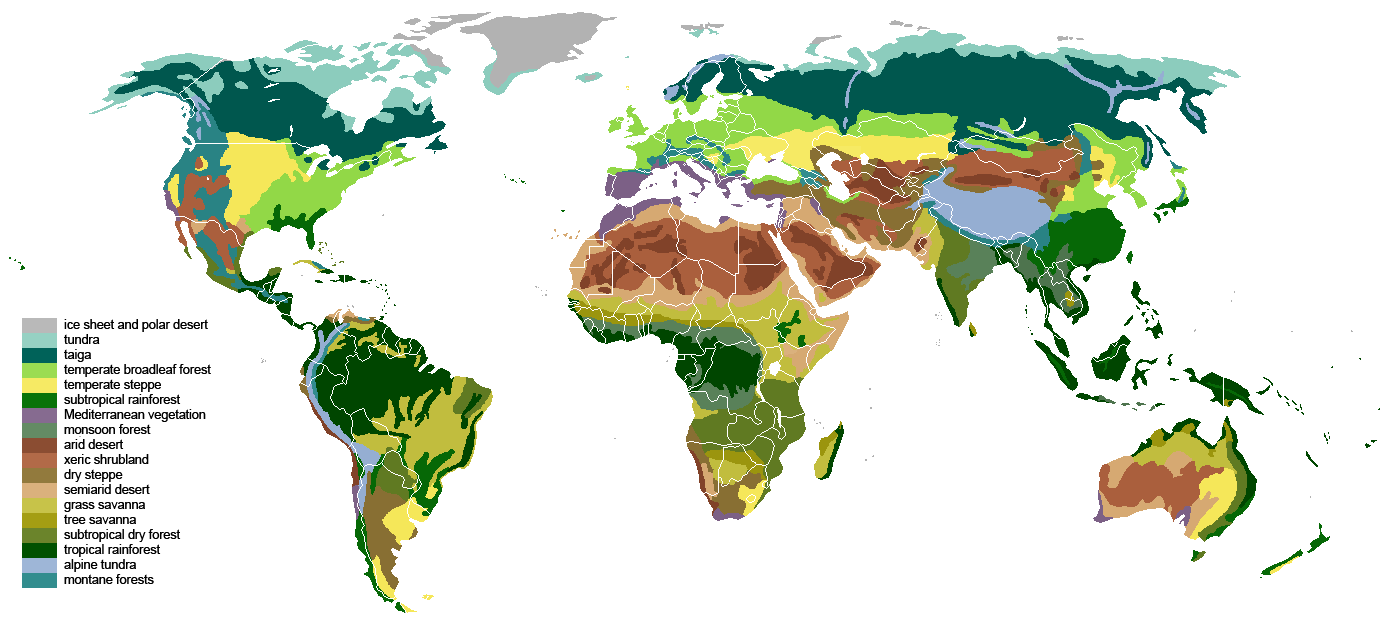A biome /ˈbaɪoʊm/ is a community of plants and animals that have common characteristics for the environment they exist in. They can be found over a range of continents. Biomes are distinct biological communities that have formed in response to a shared physical climate.[1][2] “Biome” is a broader term than “habitat“; any biome can comprise a variety of habitats.
While a biome can cover large areas, a microbiome is a mix of organisms that coexist in a defined space on a much smaller scale. For example, the human microbiome is the collection of bacteria, viruses, and other microorganisms that are present on or in a human body.[3]
A ‘biota’ is the total collection of organisms of a geographic region or a time period, from local geographic scales and instantaneous temporal scales all the way up to whole-planet and whole-timescale spatiotemporal scales. The biotas of the Earth make up the biosphere. – Definition from Wikipedia
Cannabis businesses would benefit from a valid list of Cannabis Terminology that could be branded with their applicable logo and branding as a coffee table magazine or online on their own web page with populated content from globalbio.me
Open sourced Cannabis Terms – Compiled terminology with a unique description when possible: Enjoy!
- Biology Cell Terms
- Biochemistry Terms
- Botanical Terms
- Cannabis Terminology
- Ecology Terms
- Reproduction Terminology
- Phylogentics Terminology
- NIDA Addiction Science Terms
- Institutional Acronyms
- Veterinarian Terminology
- There are 2.04 million farms and ranches (down 3.2 percent from 2012) with an average size of 441 acres (up 1.6 percent) on 900 million acres (down 1.6 percent).
- The 273,000 smallest (1-9 acres) farms make up 0.1 percent of all farmland while the 85,127 largest (2,000 or more acres) farms make up 58 percent of farmland.
- Just 105,453 farms produced 75 percent of all sales in 2017, down from 119,908 in 2012.
- Of the 2.04 million farms and ranches, the 76,865 making $1 million or more in 2017 represent just over 2/3 of the $389 billion in total value of production while the 1.56 million operations making under $50,000 represent just 2.9 percent.
- Farm expenses are $326 billion with feed, livestock purchased, hired labor, fertilizer and cash rents topping the list of farm expenses in 2017.
- Average farm income is $43,053. A total of 43.6 percent of farms had positive net cash farm income in 2017.
- Ninety-six percent of farms and ranches are family owned.
- Farms with Internet access rose from 69.6 percent in 2012 to 75.4 percent in 2017.
- A total of 133,176 farms and ranches use renewable energy producing systems, more than double the 57,299 in 2012.
- In 2017, 130,056 farms sold directly to consumers, with sales of $2.8 billion.
- Sales to retail outlets, institutions and food hubs by 28,958 operations are valued at $9 billion.
